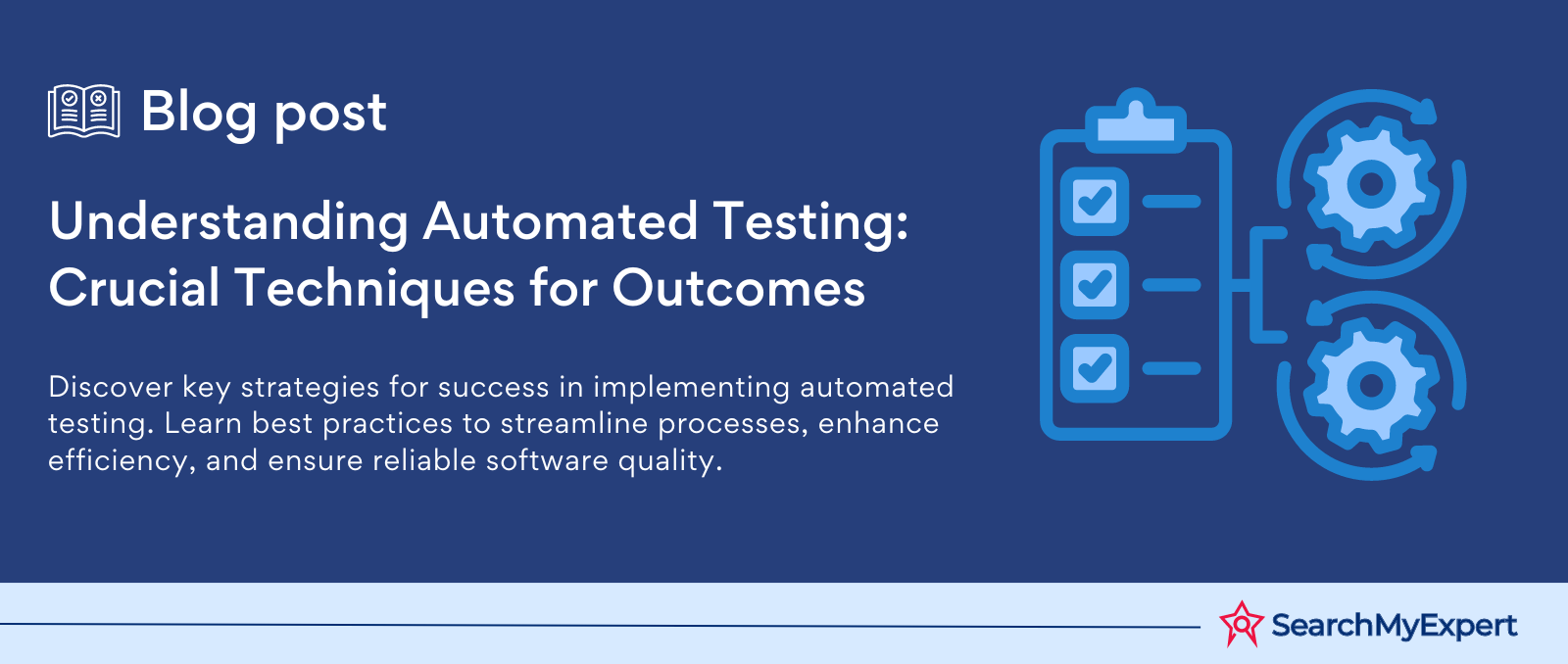What Are The Best Practices For Implementing Automated Testing: Key Strategies For Success

Implementing automated testing within a development pipeline has become indispensable for teams looking to maintain agility and ensure the reliability of their software. Automated tests complement manual testing processes by handling repetitive tasks, allowing human testers to focus on more nuanced aspects of the testing process. To maximize the benefits of automated testing, it is essential to adopt a set of best practices that streamline the development workflow and enhance the quality of the final product.
Choosing which tests to automate is a fundamental step to ensure efforts align well with business goals and delivery timelines. Best practices suggest focusing on tests that run frequently and have the potential to catch critical errors as good candidates for automation. On the other hand, complex tests that require human intuition might be best left for manual execution. Automating the right types of tests reduces unnecessary work and provides swift feedback to developers.
Understanding the types of automated tests, such as unit, integration, and UI tests, is crucial, as each serves a different purpose and fits various stages of the development cycle. For instance, unit tests verify individual components for correctness, while UI tests assess the interaction with the software's interface. Concluding, implementing automated testing with informed strategies can save time, improve accuracy, and enhance the robustness of software delivery processes.
Developing an Automated Testing Strategy
When implementing automated testing, it's crucial to understand its scope, ensure the team is qualified, and select appropriate tools and technology to meet the project's needs.
Understanding the Scope of Automation
Before crafting an automation plan, one must identify which tests to automate to maximize the ROI. Not all tests should be automated; strategic selection is necessary. For example, a test pyramid approach can guide the process by prioritizing unit tests over more complex end-to-end tests. It's essential to outline the workflow and the types of testing to be automated to maintain a clear vision throughout the implementation.
Building a Skilled Team
QA teams are the driving force behind a successful automated testing strategy. It’s important to hire experts who understand multiple programming languages like Java, Python, Perl, or Ruby. A team that is well-versed in current best practices and frameworks, equipped to maintain the CI/CD pipeline, and able to work in a DevOps culture, leveraging tools like Jenkins, will be invaluable.
Choosing the Right Tools and Technology
Selecting the right software tools and technology is paramount. The tools should be compatible with the chosen programming languages and integrate seamlessly with your team's source control systems like Git and management tools such as Jira. Continuous integration tools that align with the team's testing strategy will enhance workflow efficiency and contribute to the overall success of the test automation strategy.
These steps build the foundations of a cohesive and effective automated testing strategy and encourage a reliable and agile QA process.
Designing and Maintaining Quality Tests
In the realm of software development, designing and maintaining quality tests are crucial for the successful implementation of automated testing. This section delves into the core aspects of developing robust test cases, managing test data, achieving extensive test coverage, automating repetitive tasks, and regular upkeep of the testing suite.
Creating Effective Test Cases
Test cases must be concise, achievable, and mapped to specific requirements. Use data-driven tests to validate a range of input scenarios, enhancing the accuracy of your testing outcomes. Some tools can be instrumental in scripting test cases that stem from real user interactions, accounting for both positive and negative paths.
Managing Test Data
Test data is the bedrock of insightful testing. Implement strategies that ensure data is reflective of production environments but sanitized for security. Data-driven testing frameworks can aid in generating and handling various test datasets efficiently, thereby enhancing the reliability of test automation.
Ensuring Extensive Test Coverage
To ensure quality, your test suites should include unit tests, integration tests, regression tests, smoke tests, and sanity tests. Strive for coverage that comprehensively validates all features and integrations within the application, which can be benchmarked through code coverage tools.
Automating Repetitive Tasks and Reducing Human Error
Automating tests for repetitive tasks can significantly reduce human error and increase efficiency. Identify tasks that are error-prone and labor-intensive, and automate them using an appropriate automation tool. Regression tests and smoke tests are prime candidates for automation due to their repetitive nature.
Regular Maintenance and Updates
Consistent maintenance is vital to sustaining an effective test suite. Regularly review and update test cases to reflect changes in the application. Periodically evaluate the automation testing tools and test automation frameworks in use for potential updates or optimizations to keep the testing process streamlined and current.
By adhering to these best practices, teams can ensure that their automated testing efforts are robust, reliable, and aligned with the principles of quality assurance.
Conclusion
Implementing automated testing effectively hinges on following recognized best practices. These include incorporating thorough test planning, choosing the right tools, maintaining tests regularly, and integrating with the CI/CD pipeline. Through these practices, teams can enhance software quality, reduce manual effort, and achieve consistent and reliable testing outcomes.
share this page if you liked it 😊
Other Related Blogs

Mastering Docker for App Development: A Comprehensive Guide to Benefits, Use-Cases, and Alternatives
STAY UP TO DATE
GET PATH'S LATEST
Receive bi-weekly updates from the SME, and get a heads up on upcoming events.
Contact Us











